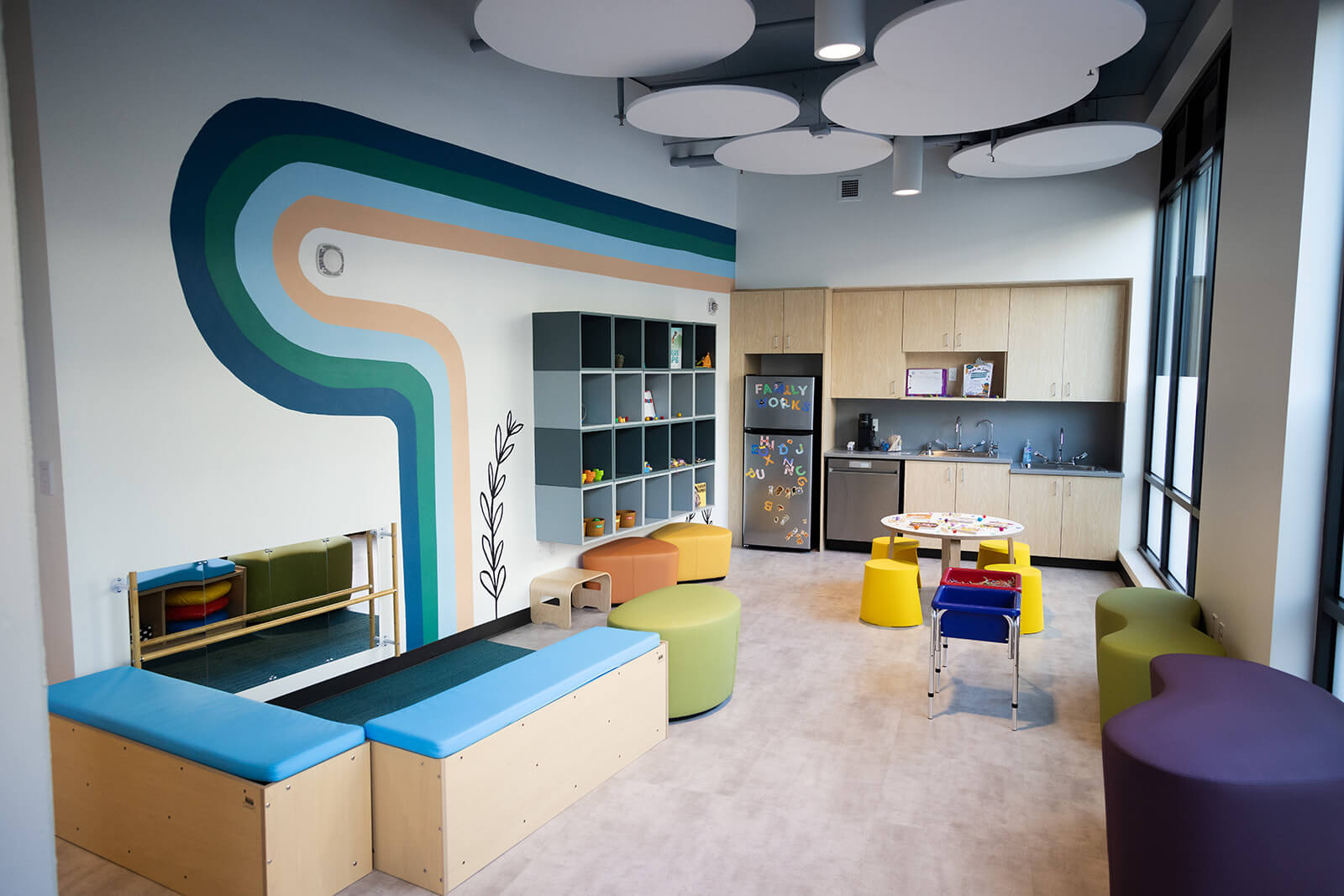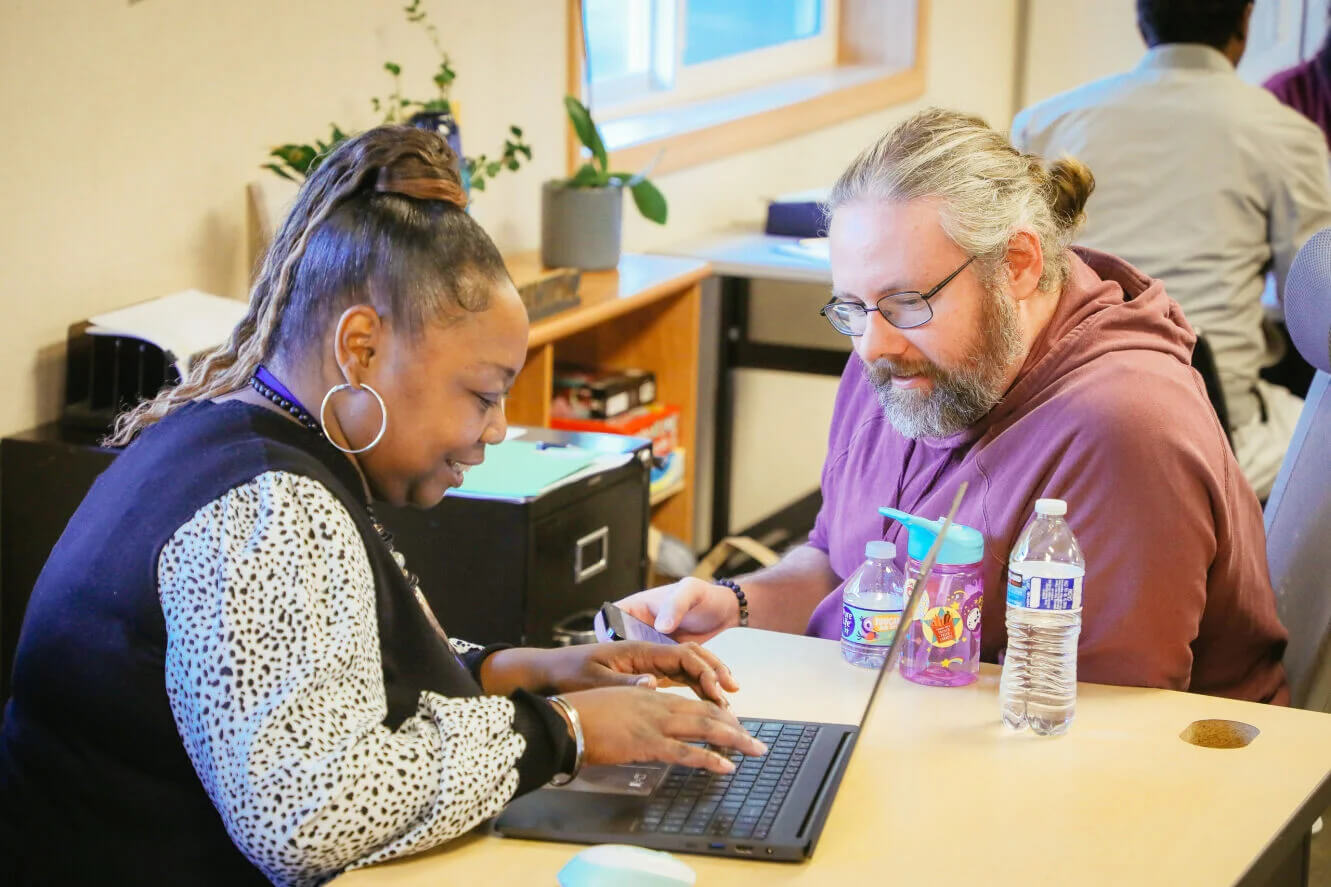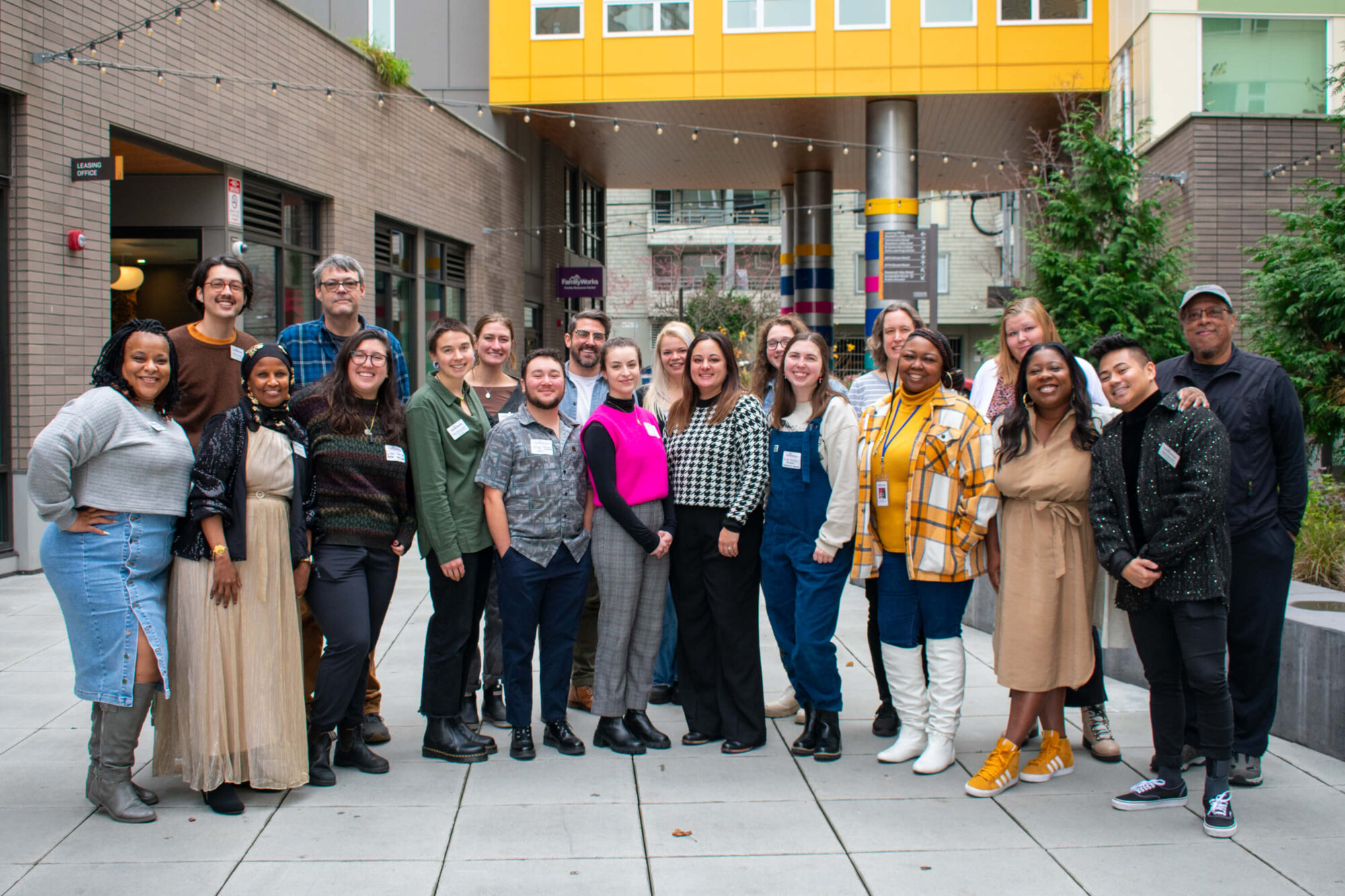Earlier this month, we welcomed partners, volunteers, donors, and community members to our town hall event to share our renewed mission, bold new vision, organizational values, and our ambitious strategic plan for 2024-2026. You can read more about the strategic plan below, and review a brief overview of the plan here.
In addition to learning about our exciting vision for the future, attendees helped us brainstorm how we can put this plan into action. You can read a recap of their feedback here. If you missed the event, we’d still love to hear your feedback and thoughts. Please reach out to us at theteam@familyworksseattle.org with any ideas or suggestions, or if you’re interested in setting up a virtual meeting to talk more.
Our 2024-2026 strategic plan seeks to answer one big question:
“How can FamilyWorks grow and refine our services to best improve outcomes for families in North Seattle through addressing food insecurity, resource needs, and offering responsive family services?”

Strategy 1: Enhance and expand programming for families across physical locations, mobile sites, and through partnerships.
- Tactic 1: Increase the number of families served to build supportive community connections, strengthen social capital and networks, and improve family well-being.
- Design and build a new Family Resource Center (pictured above) with more space to serve families individually and in community. COMPLETED
- Increase the availability of existing family support programing. This may include Kaleidoscope Play and Learn Groups, parent support, community closet and diaper support, and community connectors.
- Explore and launch new programs that focus on caregiver-child relationships and social-emotional learning opportunities for families raising children under 18.
- Tactic 2: Expand and enhance food and economic security programming.
- Renovate the Wallingford food bank location to meet growing demand, store nutritious and culturally relevant foods, and improve the shopping experience for participants.
- Expand the mobile food pantry from ten locations; add a new vehicle and staffing for mobile food delivery, reaching 700 households at 20 sites.
- Expand Text-To-Go support for more families; integrate Text-To-Go with existing food access programs.
- Connect more families with SNAP, WIC, and other income supports.
- Partner with more families so they can successfully access social services and other resources and build capacity to meet their family’s goals.

Strategy 2: Invest in holistic program design.
- Tactic 1: Evaluate/audit existing programs to identify those that are not in line with the new operating model, and make adjustments as needed.
- Tactic 2: Implement ongoing and established methods for participant feedback to co-design programs to ensure programs are accessible and effective for families.
- Tactic 3: Identify and articulate how our programs are linked and integrated to ensure families are best supported.

Strategy 3: Deepen collaborative partnerships.
- Tactic 1: Develop and enhance strategic partnerships. Partner with other service providers, including on-site, off-site, and co-location, to offer a broad range of family support programs within families’ reach where they live, learn, and grow. Partners may include affordable housing organizations, local schools, and public health services, among others.
- Tactic 2: Engage with other service partners to create and maintain a referral process to serve individuals with needs and obstacles that family-centered programming cannot meet.

Strategy 4: Strengthen organizational capacity.
- Tactic 1: Strengthen funding capacity in alignment with the articulated direction of the organization. Engage in a deeper assessment of funding shifts and their impacts on funding strategy.
- Tactic 2: Communicate our evolved direction externally, tailored for FamilyWorks’ stakeholders.
- Tactic 3: Increase organizational visibility and efficacy among potential participants, community partners, and current and potential volunteers and donors.
- Tactic 4: Create a plan and timeline for program evolution.
- Tactic 5: Determine appropriate resource levels, including staffing structures, additional staff, and additional benefits and supports for staff that are needed to make these strategies and tactics happen, especially in terms of program auditing and design.
This plan was developed thanks to the insights and feedback of program participants, staff, board, volunteers, donors, partners, and community members. Thank you all for your commitment to helping FamilyWorks deepen our impact and serve even more North Seattle families effectively.
Over the next year, you’ll hear periodic updates from us about our progress towards achieving our strategic plan goals, as well as ways you can engage in this process. We’re already taking steps to put this plan into action, including through our Nourishing Communities Capital Campaign. This campaign will help us accomplish a number of our strategic plan goals, including building a new Family Resource Center (we opened the new Cedar Crossing FRC last fall!), renovating and expanding the Wallingford Food Bank (scheduled for Summer 2024), expanding our mobile food access programs, and strengthening organizational capacity.
We look forward to engaging with you in the coming months on the implementation of the strategic plan and the Nourishing Communities Capital Campaign. Together, we can create a more equitable, vibrant North Seattle for us all.
In partnership
Marcia Wright-Soika
Executive Director

